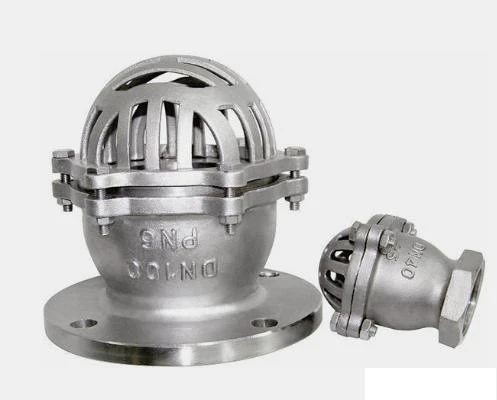Feb . 20, 2025 11:04
Foot valves serve as essential components in irrigation systems, enhancing the efficiency and longevity of agricultural and garden watering practices. These devices are installed at the pump's suction line entrance, designed to maintain prime by preventing water from flowing back from the pipes once the pump is turned off. This functionality not only conserves water but also saves energy and reduces wear and tear on pump systems, underscoring their crucial role in modern irrigation.

The effectiveness of a foot valve in irrigation relies heavily on choosing the right type for your specific needs. Typically made from materials such as PVC, stainless steel, or brass, foot valves must be selected based on the water source and the conditions of the irrigation environment. For instance, PVC foot valves are cost-effective and resistant to corrosion, making them suitable for environments with a neutral pH and non-abrasive water. On the other hand, stainless steel or brass options are more appropriate for harsher conditions, offering superior durability and resistance to rust and chemical damage.
In terms of installation, placing the foot valve at the bottom of the suction line is paramount to ensure its optimal performance. It is crucial that the valve is submerged completely in the water source to avoid drawing in air, which can disrupt the pump's efficiency. The placement should also consider access to regular maintenance, as blockages from debris or sediment can impair valve function.

Experts heed the significance of maintaining foot valves to extend their operational life. Regular inspections for signs of wear, such as leaks or corrosion, can preempt more significant issues. Cleaning should include removing sediment buildup and checking the valve's open and close function to ensure it operates smoothly without obstruction. Replacement parts like seals and gaskets should be checked regularly and replaced at the first indication of wear, ensuring a consistent seal that prevents water backflow effectively.
From an eco-friendly perspective, foot valves contribute significantly to sustainable irrigation practices. By ensuring that the system holds water in the line after the pump shuts off, they reduce the amount of water and energy required to reprime the pump. This efficiency not only conserves valuable resources but also translates to cost savings over time—a compelling reason for farmers and gardeners to invest in high-quality foot valves.
foot valve for irrigation
Foot valves are also instrumental in reducing the carbon footprint of irrigation operations. By minimizing the need for frequent pumping and the associated energy consumption, they lend a critical advantage in the global push towards greener agricultural practices. With the growing emphasis on sustainability, selecting robust and efficient foot valves can be an essential step towards achieving eco-friendly irrigation systems.
In terms of innovation, manufacturers are continuously advancing foot valve designs. The latest models incorporate features such as self-cleaning mechanisms and enhanced sealing capabilities, reducing the necessity for frequent maintenance and further improving system reliability. Such advancements highlight the importance of staying informed about the latest technologies in irrigation components to capitalize on these efficiency improvements.
When purchasing foot valves, it is advised to opt for products from reputable manufacturers known for quality and durability. References from fellow farmers or professionals in agricultural supply channels can provide valuable insights into which brands and models stand the test of time. Furthermore, a comprehensive warranty from the manufacturer can offer peace of mind, ensuring protection against manufacturing defects and enhancing the product's credibility.
In conclusion, the strategic incorporation of foot valves in irrigation systems is a testament to the notable advances in agricultural technology aimed at enhancing productivity while prioritizing sustainability. Through careful selection, installation, and maintenance, foot valves significantly contribute to the eco-efficiency and cost-effectiveness of irrigation, empowering users with a reliable solution that safeguards water resources for future generations.


 Call us on:
+86-311-86935302
+86-311-86935302
Call us on:
+86-311-86935302
+86-311-86935302
 Email Us:
info@thriveonvalve.com
Email Us:
info@thriveonvalve.com South of Huanmadian Village Town, Ningjin County, Xingtai, Hebei Province, China
South of Huanmadian Village Town, Ningjin County, Xingtai, Hebei Province, China